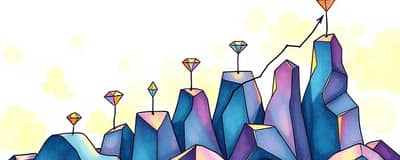Market bubbles have shaped economies, disrupted societies, and left lasting lessons that echo across centuries. By exploring their origin, growth, and collapse, we can equip ourselves with knowledge to navigate future financial turbulence.
From the colorful tulip fields of 17th-century Netherlands to the neon-lit trading floors of the dot-com era, bubbles reveal the interplay of innovation, emotion, and policy. This journey through time unveils not only the mechanics of speculation but also the human stories behind each rise and fall.
Defining Market Bubbles
At their core, market bubbles occur when asset prices far exceed intrinsic values, propelled by optimism rather than fundamentals. These phenomena follow a recognizable pattern:
- Displacement: A new opportunity or technology captures widespread attention.
- Boom: Prices surge as investors chase quick gains.
- Euphoria: Speculation peaks and caution evaporates.
- Profit-taking: Savvy participants begin to sell.
- Panic: Reality sets in and prices plummet.
Economists describe this sequence as a cycle of hope, excitement, thrill, and dejection. When speculation reaches a point of rapid price appreciation without fundamentals, it often ends in a dramatic reversal.
Historical Episodes of Mania
History offers vivid examples of bubbles that transformed economies and societies. Each episode reflects the zeitgeist of its era, from botanical obsessions to digital revolutions.
Beyond these, episodes like Japan’s asset bubble of the 1980s and the U.S. housing crisis of 2007–2008 underscore how credit and innovation can drive both prosperity and peril. In each case, exuberance gave way to harsh corrections.
Anatomy and Psychology of Bubbles
The human mind plays a pivotal role in bubble formation. Fear of missing out fuels herding, while stories of overnight fortunes drown out caution. Financial instruments like leverage and derivatives further amplify trends, creating a disconnect from underlying economic reality.
Behavioral studies highlight cognitive biases—overconfidence and herd mentality—that magnify swings. When optimism turns to doubt, investors rush for the exits, triggering cascades of forced selling and credit contraction.
Economic Impacts and Consequences
Bubbles are double-edged swords. During the boom phase, they can deliver temporary boosts to GDP, spur innovation, and generate wealth for early participants. Yet when they burst, the fallout can be severe:
- Widespread bankruptcies and job losses.
- Severe recessions and high unemployment.
- Global contagion as credit markets freeze.
Governments and central banks often respond with pivotal monetary and regulatory interventions, but recovery can span years or decades. Japan’s “Lost Decades” exemplify long-term stagnation after asset deflation.
Lessons for Today
By studying past bubbles, we gain tools to identify warning signs and mitigate risks. Key takeaways include:
- Rapid asset price surges without earnings growth signal caution.
- Excessive leverage amplifies both gains and losses.
- Policy frameworks should balance innovation with stability.
- Behavioral safeguards—like investor education—can temper herd impulses.
Prudent investors and policymakers alike must remain vigilant. Diversification, stress testing, and transparent risk disclosures are essential defenses against speculative excess.
Looking Ahead: Navigating Future Bubbles
Emerging markets in technology, real estate, and digital assets harbor potential bubbles today. Cryptocurrencies and student debt markets evoke echoes of earlier manias, reminding us that innovation and speculation often travel hand in hand.
Armed with historical insight, we can approach tomorrow’s markets with humility and resolve. By recognizing the stages of a bubble and fostering robust regulatory frameworks, societies can harness the creative energy of booms while minimizing their destructive potential.
Ultimately, market bubbles reflect the best and worst of human nature: our ability to dream big and our proclivity to follow the crowd. Embracing lessons from the past empowers us to forge a more resilient financial future—one where aspiration and prudence coexist in harmony.














